Bathroom designers offer 10 budget-saving tips for layouts, materials, fixtures and more

2. Try Not to Move the Plumbing
Related to rule No. 1, rearranging the pipes can be pricey and is often unnecessary, so it helps to avoid it if possible.
“Changing the layout of the room entirely, or even marginally, to accommodate plumbing in different areas of the room could significantly raise the cost of a renovation, especially when considering installation costs,” Raj Ghaly of BathroomsByDesign says. “So it’s recommended you try to use existing plumbing and not drastically change the layout of your room.”
-
-
- If you’re on a budget, it can be tempting to go it alone. But planning everything yourself can be a false economy. Bring in a bathroom professional early on, Wedgbury advises.
-
-
-
- “If you find a good fitting company, they can assist in the buying of materials and furniture. This should mean a substantial financial saving and be less problematic all round,” he says. “This doesn’t mean you just get what you’re given — the decisions are always yours; it’s your bathroom.”
-
-
-
- Bear in mind that bathroom pros often get the best deals. It’s in the interest of suppliers, including brick-and-mortar showrooms and online distributors, to nurture relationships with bulk buyers, Wedgbury says. “Discounts, favors and offers all help to provide the end customer with plenty of options.
-
4. Specify Clear Goals in a Contract
Avoid a long list of annoying jobs at the end of your project — which will cost extra — by drawing up a clear contract at the start. Know where you stand so that you can budget accordingly.
“Make sure it’s written down by the company or by you and agreed which tasks will be done,” Wedgbury says.
Unless you’re planning a wet room, you don’t need to cover every inch with tile, Ghaly says. Not only is tiling just part of the room cheaper, both in terms of labor and materials, but also it’s often more practical.“The advantage of part-tiling is that the bathroom becomes much more flexible,” he says. “For example, you can paint the rest of the walls, which means the bathroom can be redesigned more easily in the future, using different colors.
“Hanging pictures on bathroom walls is also becoming popular, and part-tiling gives you this option,” he adds.
When it comes to tile prices, Ghaly says, ceramic tiles are generally cheaper. “Imitation tiles — marble-look, for example — can be inexpensive yet will give your bathroom a similar luxury look and feel like the real thing.”
6. Choose Cost-Effective Materials
-
- Indeed, you don’t have to choose the most expensive materials, especially these days.
-
- “Use good-quality porcelain tiles instead of natural stone,” Steve Baker of
The London Bath Co.
- advises. “Technology is so good now, it’s often hard to distinguish between them, and porcelain tiles can be considerably cheaper.
-
- “Porcelain is also much more durable than natural stone, and less prone to cracking and chipping, and it doesn’t require regular sealing to stop it staining,” he adds. “Go for a [through-body] porcelain tile, which means your tiler will be able to polish the edges instead of using unsightly trims.”
7. Ditch the Tub
Forgoing the bathtub isn’t for everyone, but if you tend not to take long soaks, it could be a money-saving option.
“We’ve noticed more customers opting for showers rather than baths, and this can not only bring down the initial … outlay, but [also] lower running costs long-term due to greater energy efficiency,” Ghaly says.
Shopping online sales and buying showroom floor models can be great ways to bag a bargain. You may find a stylish sink at one source and a great tub at another.“You’ll reduce your expenditure by purchasing a product that’s been on display in a showroom but is unlikely to be damaged,” Ghaly says. “Clearance items will also save you a lot. These may include discontinued items, so it’s stock that bathroom retailers need to get rid of and will offer at a reduced price.
“Comparing prices is also advised, but avoid the temptation to compromise,” he continues. “By going for the cheapest deals, you may be sacrificing on the quality of design and service.”
“Also look at the entry-level ranges by quality bathroom manufacturers, as you’ll often get better materials for less money,” Baker adds.
9. Reuse Items Within Reason
Save the decent things, by all means, but if you hang on to every last screw or tub stopper, you’re defeating the purpose of planning a lovely new bathroom.
“Keeping the old ceiling because it’s ‘OK,’ or not having an extractor fan fitted as it costs a bit more, could affect the finished look,” Wedgbury says. “Saving old [faucets] or radiators to put in the new suite won’t help your budget much when the [installer] is having to clean them up or strip them down carefully to remove anyway.”
“Opting for a cheap toilet can lead to problems in the future, due to poor build quality and because flushing performance could be less than optimal,” Ghaly says. Sinks also are worth investing in, he adds, since they need to last without cracking or staining.
Lights can get the short shrift in bathrooms, but they make a big difference to the final effect. “Use good-quality LED spotlights for your bathroom,” Baker suggests. “They may cost a little more initially, but you’ll make savings sooner than you think, and you won’t have the inconvenience of constantly changing lightbulbs.”


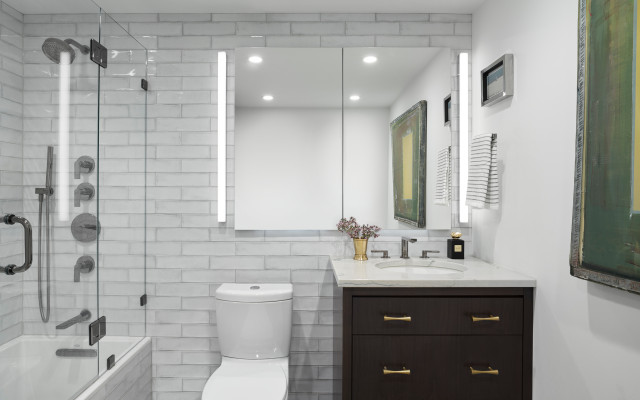
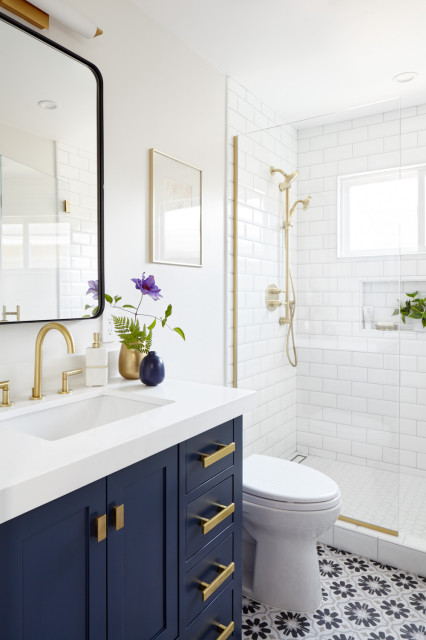
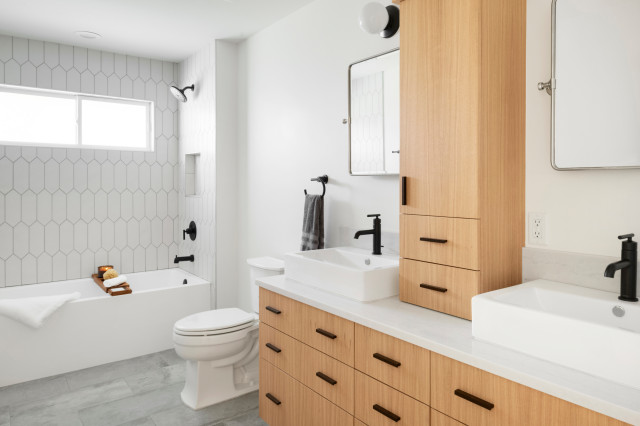

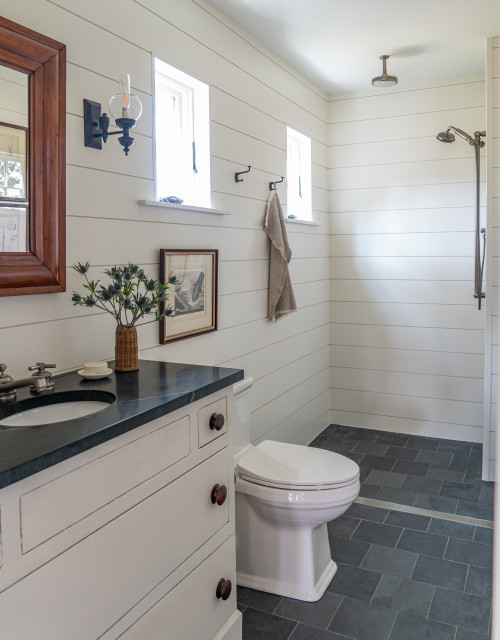



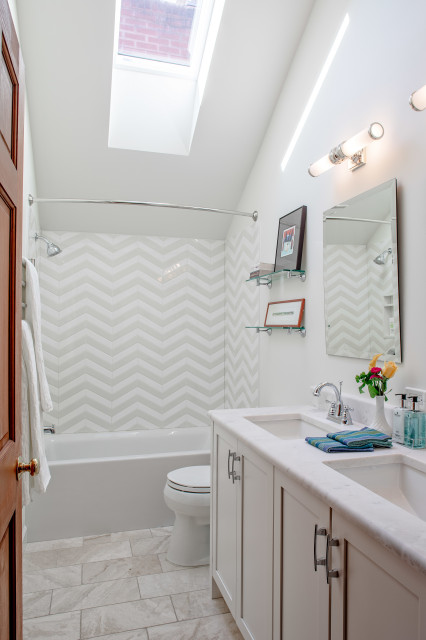

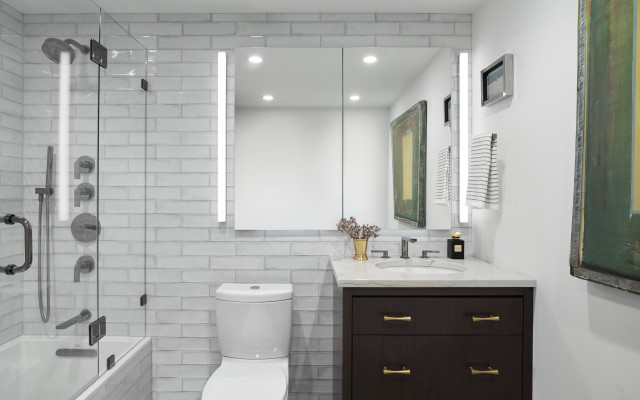
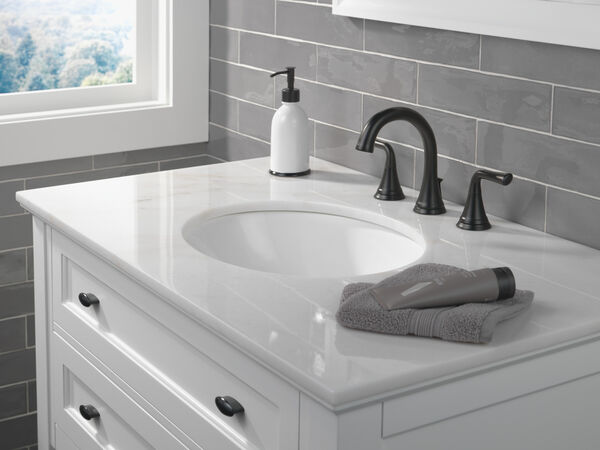
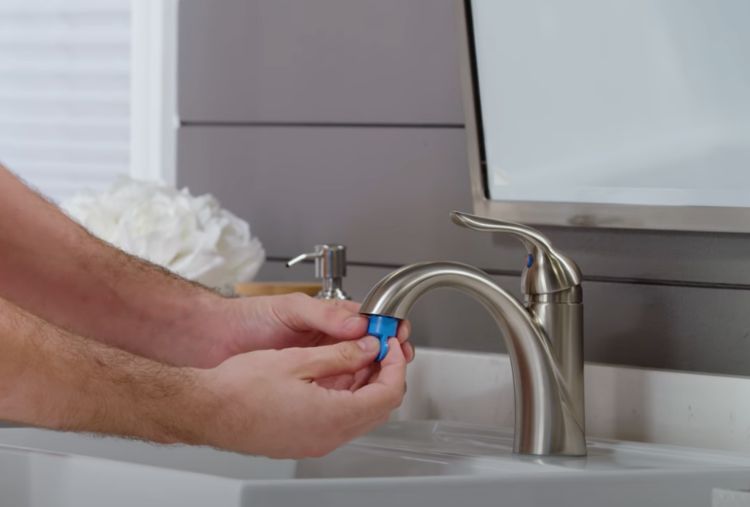
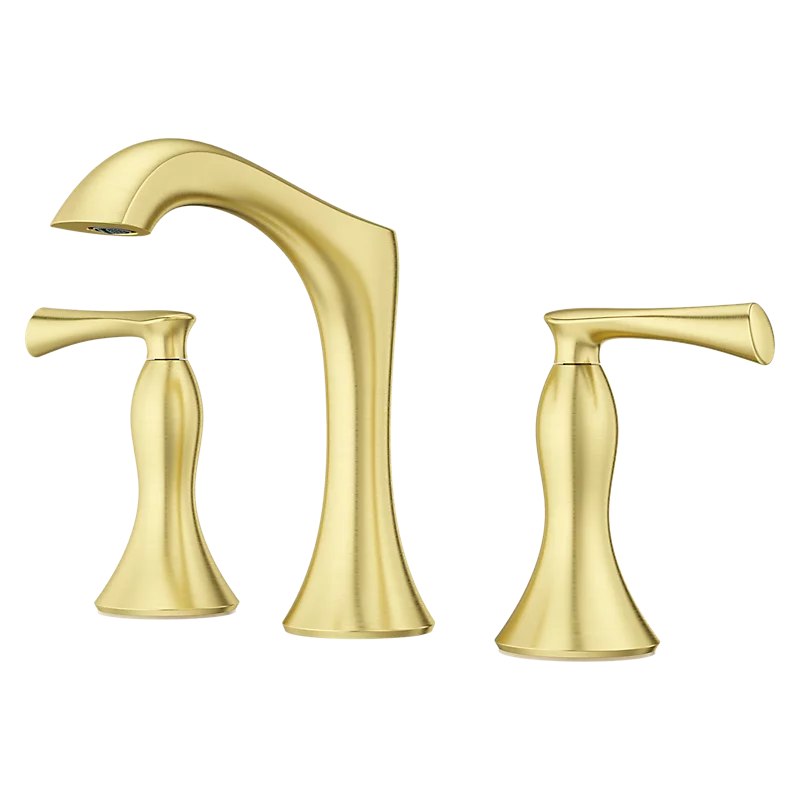
If you want to avoid expensive mistakes, getting the floor plan right is rule No. 1.“Ask your [bathroom pro] for suggestions and opinions as to what might work before you get your heart set on a layout, product or idea that can’t be realized — either at all or within a sensible budget,” Justin Wedgbury of Flush Fitting says. “I’ve been to houses where people have bought shower enclosures that totally dominate a room and leave tiny spaces to sidestep around, or devised a layout that means the door hits the basin when opened.
“When visiting a showroom, take pictures of your space as well as the measurements,” he adds. “The bathroom isn’t always an easy or straightforward room to buy for.”